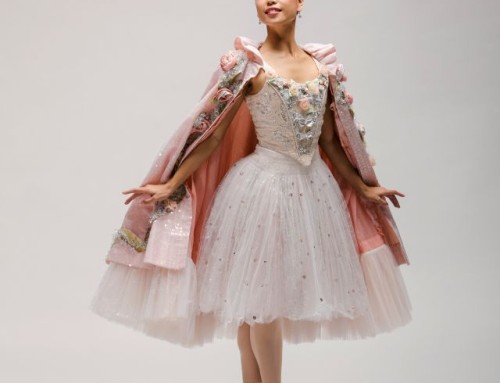PNB School is thrilled to introduce you to Josh Spell, former PNB Company Dancer, and our new Consulting Therapist! Josh officially joined the PNBS Consulting staff in July to present health and wellness seminars for our 2020 Seattle Summer Course students, and he will oversee student health and wellness programs and initiatives moving forward. He will present and coordinate seminars throughout the school year on topics based on “Creating the Holistic Dancer,” including nutrition, mental health, and stress management; he will work with Company dancers Cecilia Iliesiu and Amanda Morgan to continue to develop the mentorship programs for Level VII, VIII, and Professional Division students.
We are so excited to welcome Josh back into the PNB family, and he is looking forward to working with our students. Read a little bit more about Josh and his professional journey from professional dancer to social worker and therapist below!
What are you most excited about being back at PNB?
Josh Spell: Returning to PNB in a new role is a full circle moment for me. I am excited to bring a different perspective to the organization and share the knowledge I have learned as a therapist with the community and translate this into work with dancers.
Can you give a quick explanation of what a Consulting Therapist at a ballet school does?
JS: My role as consulting therapist equips dancers with skills to navigate the nuances of being a dancer while not overlooking the whole person. Dancers can schedule individual sessions to talk about their struggles in a confidential setting from an objective point of view or I can provide resources for other providers in the community if long-term work is more helpful. Dancers will also participate in seminars around skill building and getting more in touch with their holistic dancer self.
What made you want to go into social work and behavioral therapy?
JS: As a dancer, I struggled with my own self-worth and through trial and error found therapy to be an effective platform for me to discuss my struggles with an unbiased person. I found that with additional proactive support, I did not have to endure some of the hardships with my mind or body. After I left Pacific Northwest Ballet, I took a year off before returning to dance at Kansas City Ballet. I had gained a new perspective while stepping away from the dance world, but as I returned, I noticed the inner doubts had crept back in. I was intrigued with how my view of myself could be so different based on the environment. I took note of these challenges and how I coped or did not cope and eventually realized I would like to pursue a career in mental health. I did not want to be in school forever, so I took the social work route because it was less time in school. I trained for about 3 years after college developing my professional identity and working in a variety of settings including the Emergency Department and inpatient and outpatient mental health clinics.
Where do you see the connections between your current work and your time as a professional dancer?
JS: Therapy is like a partnership with two individuals. One person sometimes takes the lead, but true collaboration is often what makes the most meaningful work, which mirrors an effortless pas de deux. There may not be the same predictability I found in ballet, yet there is a similarity in the creative process of breaking down a particular ballet step or perceived problems into tangible actions. Through practice and repetition, people can achieve a level of fulfillment, just like on stage.
Did your time as a professional dancer and your time getting your undergraduate and master’s degrees overlap? Were you dancing while working on your academic education?
JS: I was part of the first cohort of dancers who attended Seattle University through Second Stage; a professor came to the Phelps Center to teach one class a quarter. I did these classes off and on while dancing at PNB, and I took classes at a local community college my final season at Kansas City Ballet. When I retired, I was able to focus my time solely on academics. I was able to complete my undergraduate and graduate degree in 3 years. I danced most of that time in local guestings to support my transition, but the bulk of my academic education did not overlap with my time as a professional dancer.
Do you still take class? Ballet or other movement classes?
JS: I no longer take ballet classes. I danced for about 2.5 years after I retired and then one day, I realized I was ready to take a step away to develop other aspects of my identity. I dance around the house all of the time or more specifically chaînés and pirouettes around my kitchen. I love to move to music, and I am quite the bun head. I have streamed a lot of ballet over the pandemic. I still am very active and find a lot of fulfillment in yoga and swimming, although I’ve had to adapt due to COVID-19.
What were your favorite roles to dance when you were dancing for PNB?
JS: Fancy Free, Puck in a Midsummer Night’s Dream, Petit Mort and Sechs Tanze, Benvolio in Romeo et Juliette and most of the Balanchine rep.
What or where is your favorite place in Seattle?
JS: Parsons Garden on the top of Queen Anne is a quiet, intropsective place to reflect and then you walk out and you have an amazing view of the Puget Sound and Olympics. I sometimes take a pastry from Macrina Bakery or cupcakes from Trophy Cupcakes or just have a picnic with homemade sandwiches.
Featured photo: Josh Spell in Fancy Free. ©Angela Sterling.





